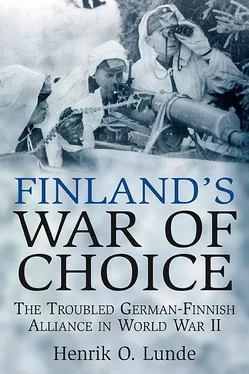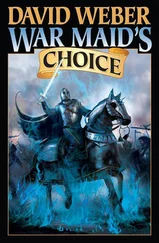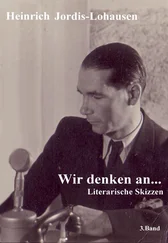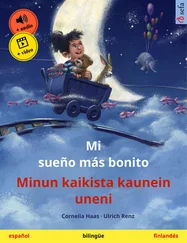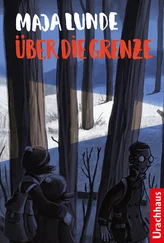74. Westerlund, op. cit., pp.64–65 and M. Jokipii, Jatkosodan synty. Tutkimuksia Saksari ja Suomen sotilaallisesta yhteistyöstä 1940–41 (Keuruu: Otava, 1987), pp.620–622 and Vehviläinen, op. cit., p.89.
75. As quoted in Vehviläinen, op. cit., p.89.
1. NSR, VII, Fuerher Directive 21, dated December 18, 1941.
2. NSR, Serial 260, Schnurre, Aufzeichnung, October 31, 1941.
3. Ryti is also alleged to have told Schnurre that he favored depopulating the Leningrad area and that Germany should retain it as some kind of “trading post.”
4. NSR, Telegram from Blücher to the Foreign Office, Serial 260, November 9, 1941.
5. Blücher, op. cit., pp.263–264.
6. Major General Sir Charles Maynard, The Murmansk Venture (London: Hodder & Stoughton Ltd., 1928), pp.95–98.
7. Rüdiger Graf von der Goltz, Als politischer General im Osten (Leipzig: K. F. Köhler, 1936), p.63.
8. Lundin, op. cit., p.121, quoting several historians.
9. Erfurth, The Last Finnish War, p.20. This order of the day is not quoted in Mannerheim’s memoirs.
10. Lundin, op. cit., p.127. Also published in the New York Times, July 15, 1942 after it had been released by the Germans.
11. At the war-guilt trial in 1945, President Ryti stated that government was not informed of the July 7 order of the day and it did not reflect Finnish policy.
12. Blücher, op. cit., pp.245–246 and pp.249–250.
13. Waldemar Erfurth, Der finnische Krieg 1941–1944. (Wiesbaden: Limes Verlag, 1950), p.197.
14. Karl von Clausewitz, On War (Translated from the German by O. J. Matthijs Jolles. Washington, D.C.: Combat Forces Press, 1953), p.569.
15. Erfurth, The Last Finnish War, p.57 and Ziemke, The German Northern Theater of Operations, p.133.
16. Mannerheim, Memoirs, p.422; Erfurth, The Last Finnish War, pp.187–188; and Waldemar Erfurth, Problemet Murmanbanan under Finlands senaste Krig. Translated by Azel Öhman (Helsingfors: Sönderström & Co. Förlagsaktiebolag, 1952), pp.18–19.
17. The source for this translation is Trevor-Roper, op. cit., pp.93–98.
18. Murmansk is a relatively new town, the last founded in the Russian Empire on October 4, 1916. It was first named Romanov-on-the-Murmane, after the Romanov dynasty. It was renamed Murmansk in 1917. Murman is the traditional Pomor name for the Barents Sea. The Pomors were Russian settlers who penetrated the White Sea and Kola regions. The name Murmane derives from the old Russian word for Norwegians. After a considerable increase in population during and after World War II, the population has recently shown a significant decline from 468,039 in 1989 to 336,137 in 2002. It remains the largest city north of the Arctic Circle.
19. Paul Carell, Hitler Moves East 1941–1943. Translated from the German by Ewald Osers (New York: Bantam Books, 1966), p.443.
20. Carell, op. cit., p.444.
21. The SS-Kampfgruppe Nord was composed of the 6th and 7th SS Death’s Head Regiments. It was a police unit and had just begun military training. It was the only motorized unit in the Army of Norway.
22. Erling Jensen and Ragnar Ulstein, Kompani Linge (Oslo: Gyldendal Norsk Forlag, 1962), p.17.
23. Joseph H. Devins, The Vaagso Raid (Philadelphia: Chilton Book Company, 1968), p.202. and Henrik O. Lunde, Hitler’s Pre-emptive War. The Battle for Norway, 1940 (Drexel Hill: Casemate, 2008), p.550.
24. Carell, Hitler Moves East, pp.446–448.
25. Some sources refer to this organization as the Finnish V corps. That was its designation before it was attached to the German command on June 15, 1941 after which its designation became III Corps.
26. A dispatch by General Erfurth quoted by Ziemke, The German Northern Theater of Operations, p.136.
27. Tanner, op. cit., p.94.
28. Carell, Hitler Moves East, p.447.
1. I recommend, for example, the excellent work by Richard Woodman, Arctic Convoys 1941–1945 (London: John Murray Ltd, 1994).
2. Churchill, The Second World War, volume III, pp.378–380. Stalin wanted a landing in the north and, “if the British were afraid he would be willing to send round three or four Russian army corps to do the job.”
3. Woodman, op.cit., p.9.
4. Loc. cit.
5. An amazing achievement of the war was the mass construction of Liberty Ships in the United States based on a British concept. 2,751 of these ships were built between 1941 and 1945. The construction of each ship was incredibly fast. The average time from the laying of a keel until the ship was launched was 42 days. The fastest recorded was that of the Robert G. Perry, launched in Richmond, California on November 12, 1942, 4 days and 15½ hours after the keel was laid. (Woodman, op. cit., p.20). The Allied effort was also greatly assisted by the availability of the Norwegian merchant fleet—some 223 modern tankers and over 600 cargo vessels. Churchill wrote that they were “worth a million soldiers.” (Woodman, op. cit., p.22).
6. Prince of Wales was not to survive long. She was sent to the Far East in October 1941 and sunk by Japanese bombers operating from Saigon along with the battle-cruiser Repulse on December 10, 1941.
7. Stephen Wentworth Roskill, The War at Sea 1939–1945 (London: HMSO, 1954), volume II, p.143.
8. Woodman, op. cit., p.447.
9. Carell, Hitler Moves East, pp.456, 465–466.
10. Woodman, op. cit., p.14.
11. Ibid, p.444.
12. Ibid, p.443.
13. Ibid, p.444.
14. Chris Bellamy, Absolute War. Soviet Russia in the Second World War (New York: Alfred A. Knopf, 2007), p.440.
15. Loc. cit.
16. Ibid, pp.440–441.
17. Ibid, pp.441–442.
18. Nikita S. Krushchev, Khrushchev Remembers. With an introduction, commentary and notes by Edward Crankshaw. Translated and edited by Strobe Talbott (New York: Bantam Books, Inc., 1971), p.239 and note 43.
19. Bellamy, op. cit., p.443 and Woodman, op. cit, p.444.
20. Joan Beaumont, Comrades in Arms: British Aid to Russia 1941–45 (London: Davis Poynter, 1980), pp.212–213.
21. Ibid, op. cit., pp.213–214.
22. Krushchev, op. cit., p.239.
23. Ibid, p.237.
24. Bellamy, op. cit., p.444.
25. Erfurth, The Last Finnish War, p.25.
26. M. Kräutler and K. Springenschmidt. Es war ein Edelweiss. Schicksal und Weg der zweiten Gebirgsdivision (Graz: Leopold Stocker Verlag, 1962), p.165.
27. Carell, Hitler Moves East, p.451.
28. Ibid, p.449.
29. Ibid, p.452.
30. Kräutler and Springenschmidt, op. cit., p.169.
31. Ziemke, The German Northern Theater of Operations, p.154. This was based on a 1957 review of the draft of Ziemke’s work by General Erich Buschenhagen.
32. Kräutler and Springenschmidt, op. cit., pp.152–153.
33. Ziemke, The German Northern Theater of Operations, p.155.
34. Gerda-Luise Dietl and Kurt Hermann, General Dietl, München: Münchner Buchverlag, 1951, pp.231–233.
1. Ziemke, The German Northern Theater of War, p.166, note 12.
2. Condon, op. cit, pp.80–103.
3. General Falkenhorst was not a stranger to Finland. In 1918, at the end of WWI, he had served as operations officer of General Rüdiger von der Goltz’ forces in Finland. In this capacity he had undoubtedly encountered Marshal Mannerheim and some of the other key military leaders.
4. Erfurth, The Last Finnish War, p.26.
5. Ziemke, The German Northern Theater of Operations, p.158. If Ziemke is right, the transfer of command on June 17 must have been a relief of command.
6. Ibid, p.160.
7. Erfurth, The Last Finnish War, p.27.
8. Ziemke, The German Northern Theater of Operations, pp.165–166.
9. Trevor-Roper, op. cit., p.147.
10. One additional advantage of Finnish experience, which became obvious as the war progressed, dealt with encirclements. The Germans favored wide encirclements but in an area of dense forests such encirclements were time-consuming and difficult to seal. The Finns, on the other hand, favored smaller and tighter encirclements that were easier to accomplish and seal in difficult terrain. These types of encirclements were made famous in the Winter War and gave rise to a new military term—motti.
Читать дальше
